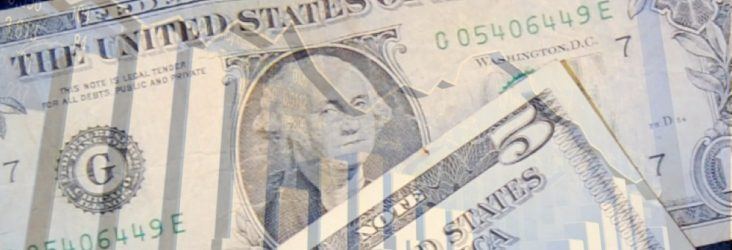UA banking professor unveils new ‘stress test’ tool for community banks
by January 14, 2016 4:59 pm 571 views

A new stress test tool created by Tim Yeager, finance professor at the University of Arkansas, is designed to help bankers assess their ability to handle the risks they are taking in their lending practices. The one mistake most Arkansas bankers don’t want to repeat is facing the loan losses they were forced to absorb between 2008 and 2012.
Yeager said he came up with a similar stress test in 2007 – pre-recession – because there was warranted regulatory concern about the high concentrations of commercial real estate loans held by banks of various sizes.
“In the first 2007 stress test model there was no history to plug in to let us see how bad things could get in a worst case scenario. At that time the most recent banking crisis happened in the 1980s and no one had records from that time period,” Yeager told Talk Business & Politics.
Yeager also is the Arkansas Bankers Chair at the UA and a former economist with the Federal Reserve Bank in St. Louis.
He said in 2014 when the banking sector profits returned to normal he got back to work on an updated version of the stress test that now contained a full cycle of the stress and recovery. Yeager finished the stress test tool at the end of 2015, with the help of an honors graduate student who used the project for her thesis. The new stress test tool is now being unveiled to community bankers across the country who want to see how well they can handle loans losses should they occur. Yeager said the resource is free and easy to use as it takes just a few minutes to run each quarter when the bank routinely files their Call Reports with the Federal Deposit Insurance Corp.
“It’s just a matter of uploading the Call Report data information into the online model and the reports almost run themselves. The stress test provide a realistic, bad case scenario analysis on the risks identified in the financial statements. The results let the bank know how high loan losses can get before they will suffer major capital erosion,” Yeager said.
Yeager’s stress test model is a customizable Excel spreadsheet that provides realistic, worst-case, five-year forecasts. It imposes a surge in loan losses based on community banks’ actual charge-offs over 2008 to 2012, the five year horizon that captured the deterioration and recovery of bank balance sheets from the Great Recession, he said. This type of stress test analysis is one way bankers can check the bank’s overall financial health and its ability to absorb loss should some of the loans default.
Yeager said the tool is available, but it’s up to bankers to use it and heed any warnings. He said banks in Arkansas, Missouri and Oklahoma all took part in his 2007 Stress Test model and he expects the newer, improved version will eventually be used by community bankers across the nation who want to make sure they are driving between the lines in terms of the risks they are taking with lending and investments made over the long term.
Northwest Arkansas bankers recently told Talk Business & Politics that the hyper competition they face for loans is as intense as it was before the banking crisis of 2008. Banking expert John Dominick said bankers are more likely to take some risks in this competitive climate even if they know better than do so.
“One thing I will say that is different between now and 2007 in terms of this competitive loan market is that banks are holding far more capital today than there they were pre-crisis. Back then a bank could have 7.5% to 8% capital ratios and be considered adequately capitalized. Now we know that isn’t necessarily true and those capital ratios are more than 15% and rising as banks are required by regulators to have more underlying capital,” Yeager said.
While use of the stress test is voluntary, Yeager expects community bankers will get on board because regulators approve. In fact, banks with more than $10 billion in assets are required by the FDIC to undergo regular stress testing scrutiny by federal regulators.
“This type of stress-testing analysis is coming down from above and I suspect state regulators will also be asking community banks how they are stress testing their loan portfolios and other assets against loss in the coming months,” Yeager said. “Any U.S. community bank can utilize the resources I developed to build a customized macro stress-testing model to assess the bank’s ability to withstand a severe and prolonged period of high credit losses.”
